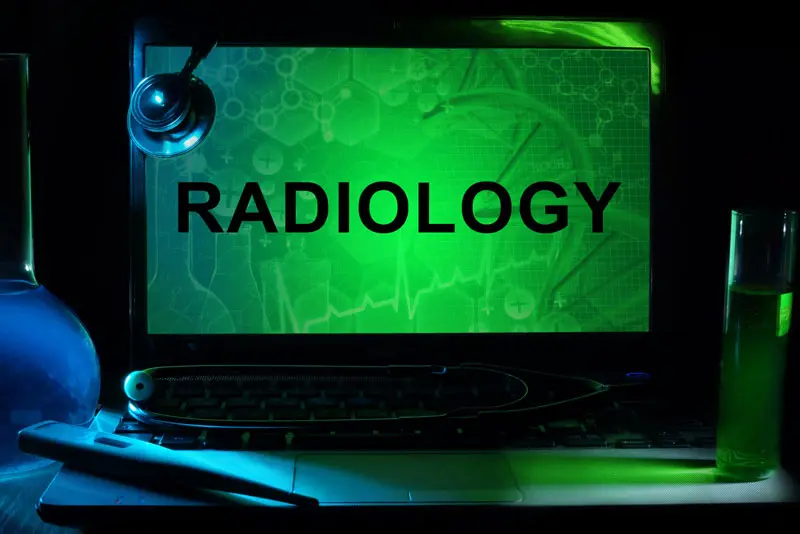
Table of Contents
Radiology reports are an essential element of patient care and communication between radiologists and referring physicians. Many radiologists rely on a medical transcription outsourcing company to deliver accurate and timely radiology reports. With the implementation of electronic health records (EHRs), patient portals, and the passage of the 21st Century Cures Act, patients can access their radiology reports. This makes patient-friendly radiology reports a necessity. Let’s take a look at what goes to make a patient-friendly radiology report.
Why Patients Need Access to Radiology Reports
Generally, radiology reports are written with the physician in mind and not the patient. However, allowing patients to access their health record is important as it can help them make more informed decisions about their healthcare. Online access also allows them to share their radiology reports with other physicians electronically, which could increase the safety, quality, and efficiency of care.
Diversified Radiology, a radiology group in Colorado, implemented a patient portal with interactive patient-friendly reports to help patients understand their imaging results. The effort was led by Jennifer L. Kemp, MD, FACR, who was at the time vice president and a body imaging subspecialist at Diversified Radiology. Up to 86% of patients who access their radiology reports with the tool report a positive experience.
“When patients better understand their radiology reports, they are more engaged in their healthcare. They are better positioned to advocate for the care they need when they have discussions with their physicians and are more likely to adhere to treatment recommendations if they understand the reasoning behind those recommendations. This means that, ultimately, patients will have better outcomes.,” said Kemp (as referenced by the American College of College).
While patient portals now facilitate patient engagement in care, patient understanding of radiology reports is crucial. Patient-friendly radiology reports are those with relevant information about the imaging study presented in a way that patients can easily understand.
Looking for high-quality transcription services with quick turnaround times and affordable pricing?
Contact us at 1-800-670-2809!
Tips for Writing Patient-friendly Imaging reports
Here are 5 tips for writing patient-friendly imaging reports:
- Are easy to read and understand: The report should be clear and written in simple language that is easy to read and understand. As patients may not understand medical jargon or technical terms, avoid using them. The report should describe the results in plain language.
- Clarify the reason for the test: The patient should understand why the test was ordered. Clearly explain the purpose of the study, its importance, and information that it provides.
- Provide additional details and use visual aids: It’s important that the patient understands what is normal and what is abnormal. Using visuals and diagrams can help patients understand the findings better. For instance, in one study that discussed patient-friendly imaging reports, the patient was provided with his or her original image along with four additional images to simplify their understanding of the images. Also, describe how the findings relate to the patient’s clinical history and symptoms.
- Avoid language that can cause anxiety: Avoid writing in a way that will make patients feel insecure and anxious. Many patients experience fear, anxiety, and worry as they wait for the results of diagnostic imaging tests. This is a completely normal and understandable feeling. Radiologists should ensure that they don’t use language that may alarm patients. They should focus on providing information that makes them feel more informed about their health in a reassuring tone.
- Provide guidance on next steps: If there is an abnormal finding, the report should guide the patient on next steps in the Impression Section. For a potentially abnormal finding, RadiologyInfo.org notes that the radiologist may recommend:
- Other imaging tests that can help better assess the finding or getting a follow up imaging test to relook at the finding after a period of time.
- Getting a biopsy.
- Combining the finding with clinical symptoms, laboratory test results, or with any other imaging studies that the radiologist interpreting the test does not have access to. This is common when patients have imaging tests done at different facilities or hospitals.
Patients could also be advised on consultations with other healthcare providers or lifestyle modifications.
If the radiology report does not answer the clinical question or there is a suspicious or questionable finding, more exams may be necessary. If they have questions, concerns or further questions, patients can contact their physician or radiologist.
Studies have recommended ways to design more patient-friendly radiology reports. In one study published in J Digit Imaging. (2021 Jun), the researchers said they provided definitions for any medical terminology and underlined these terms. The way the report was organized was also modified to make it easier for patients to read it. Different colors were incorporated to improve report navigation and increase understanding. The report also included a timeframe for treatment, instructions, resource information and a summary table with some general recommendations
The study found that the improved radiology report design could increase patient engagement, and that the enhancements could increase patient understanding of the report. “If the patient understands more about his or her report, this could decrease the time that physicians spend talking to patients about the report”, they wrote.
Providers need clear, concise, accurate and timely radiology reports that provide an objective assessment of the imaging findings. Correct information is essential to avoid misinterpretation of the images. Imaging reports should also include descriptions of the imaging findings, including the location, size, and characteristics of any abnormalities. Sufficient detail is necessary to enable referring physicians to make informed decisions.
Why Outsource Radiology Transcription
As radiology reports are important documents that provide vital information about a patient’s condition and treatment, they need to be transcribed correctly. Medical transcription outsourcing companies that specialize in radiology transcription can ensure accurate and timely reports that help healthcare professionals, such as primary care physicians, surgeons, and oncologists, to make informed decisions about patient care.


